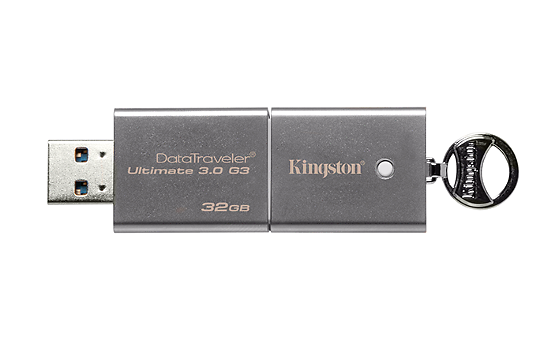At CES, THIS Really Stands Out!
 Dewd! A ONE TB Thumbdrive! DEWD! Can haz??!
Dewd! A ONE TB Thumbdrive! DEWD! Can haz??!
Hands-on with Kingston’s 1TB USB Stick
“While CES is known for bringing a storm of new gadgets, just a few products really stand out each year. On Monday, Kingston announced one such device. In Las Vegas this week, the company unveiled the world’s first 1TB USB stick.
Set to launch during the first quarter of this year, the drive carriers both the DataTraveler and HyperX brands. Officially named the DataTraveler HyperX Predator 3.0, we heard it affectionately referred to as ‘the brick’ on more than one occasion this evening. In fact, we had a hard time getting near Kingston’s booth at Pepcom’s Digital Experience tonight. Each time we tried to visit the company, we were put off by a crowd of people all eagerly craning their necks for a better look at the device (among other wares on show at the Kingston table).
We eventually got a hold of a tired Kingston rep who confirmed a Q12013 launch but couldn’t give any specifics on pricing. The DataTraveler HyperX Predator 3.0 offers read/write speeds of up to 240MB/s and 160MB/s, is SuperSpeed USB 3.0 certified and is also backwards compatible with USB 2.0. Kingston also has a 512 GB version in the market, which is priced at $1,750. We’ll keep you posted on a price for the 1TB version.
Feast your eyes on the images below in the mean time. Unsurprisingly, the company didn’t even really bring the device to CES. The ones you see in the photos are mock ups. When we asked if they were the real thing, a Kingston rep told us no, adding, “Do you think we’d have them out on the table if they were?” That, along with the price of the 512GB model, should give you an indication of just how expensive this thing will be.”
 The “official” Windows 8 app is out for DropBox. It is a bit “under-whelming” right now, but I am sure it will improve over time. It does provide a screen to access your DropBox files.
The “official” Windows 8 app is out for DropBox. It is a bit “under-whelming” right now, but I am sure it will improve over time. It does provide a screen to access your DropBox files.


 OK, this is carrying the Internet addiction TOO far! Yeesh!
OK, this is carrying the Internet addiction TOO far! Yeesh! Do you have files that you can’t open and view, and/or read? Maybe you don’t have the right software for that file extension? Well, dewd, here you go! Free Opener, is, as the name implies, FREE, and will open 80 or more file types to view them!
Do you have files that you can’t open and view, and/or read? Maybe you don’t have the right software for that file extension? Well, dewd, here you go! Free Opener, is, as the name implies, FREE, and will open 80 or more file types to view them! This is an article from May of 2012, so it is kinda old news, but it is the first I have seen of it. This looks like it would really be fun and geeky to play with!
This is an article from May of 2012, so it is kinda old news, but it is the first I have seen of it. This looks like it would really be fun and geeky to play with!